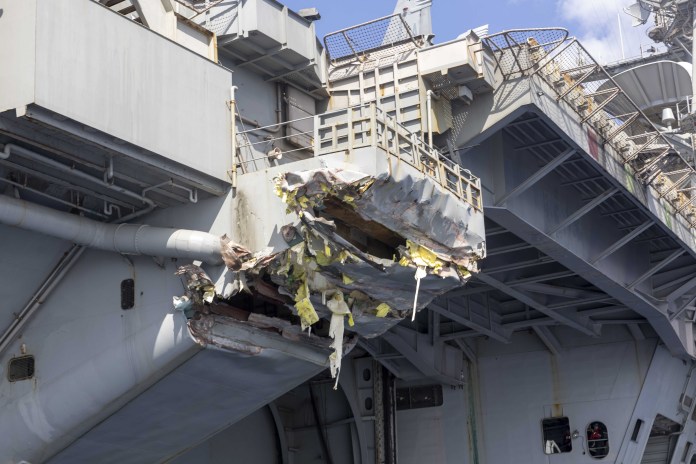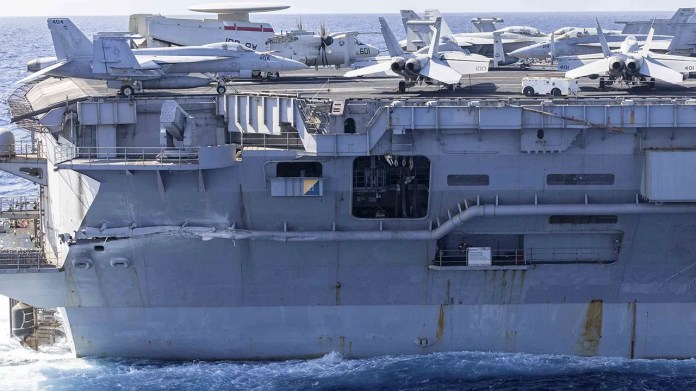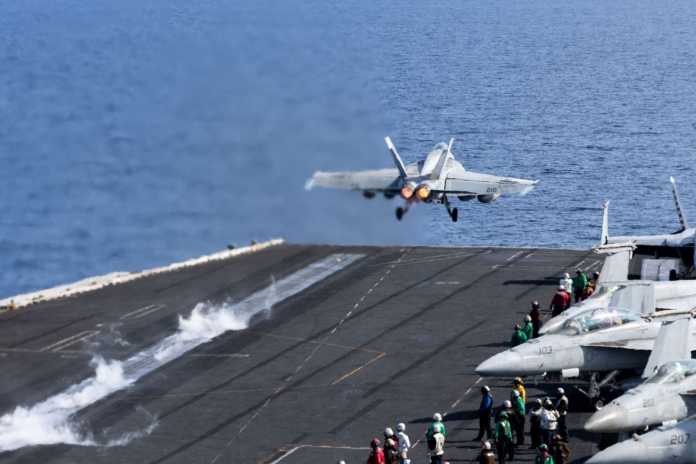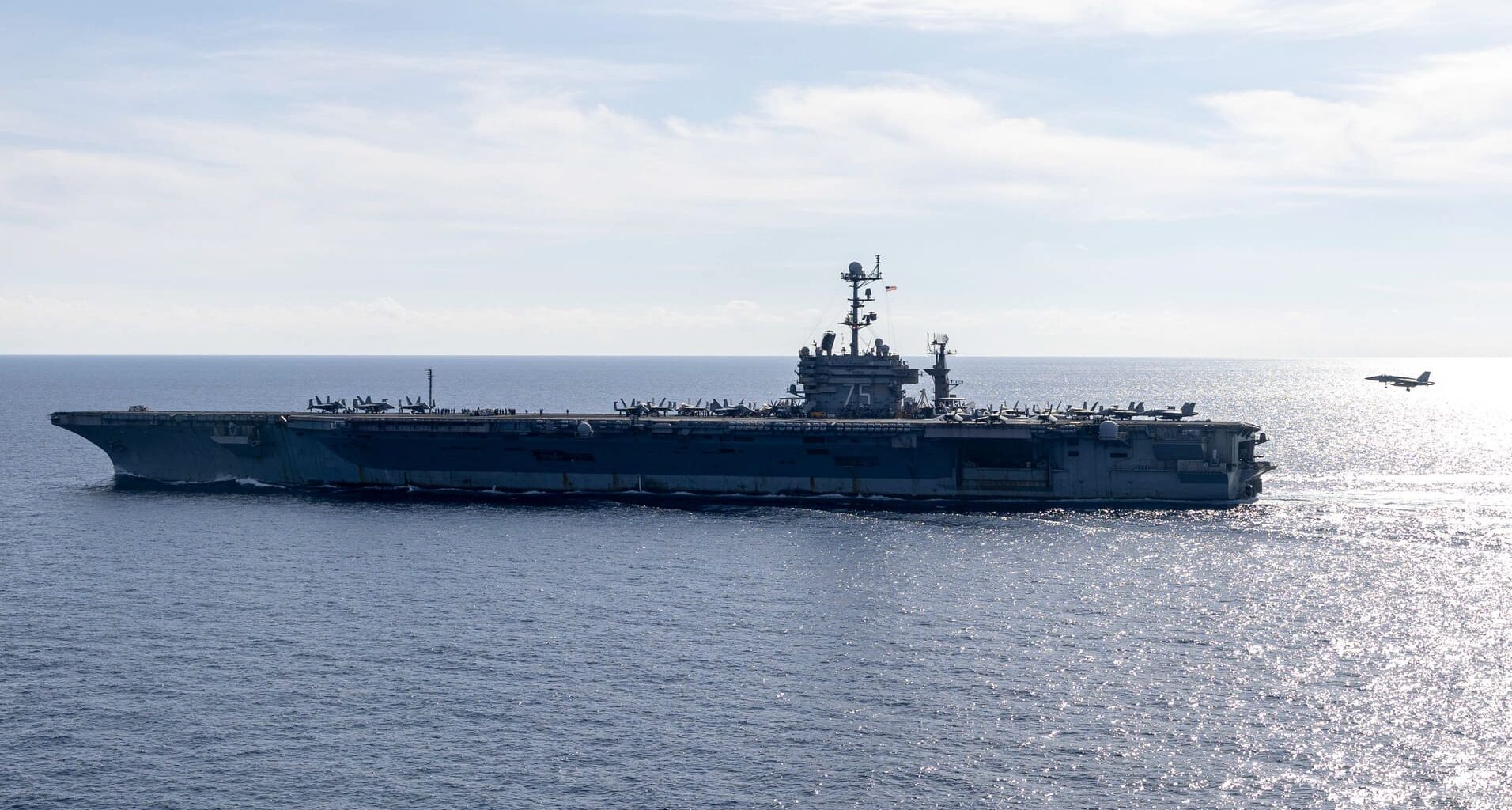Just days after colliding with a merchant vessel in the Mediterranean, the U.S. Navy’s nuclear-powered aircraft carrier USS Harry S. Truman has arrived in Greece for repairs, which will be carried out by the U.S. Naval Support Activity (NSA) located in Souda Bay. The incident occurred on February 12 at 11:46 PM local time, while the Nimitz-class aircraft carrier was operating in Mediterranean waters following a 50-day deployment in the Middle East. Initially, no significant damage was reported to either the U.S. vessel or the merchant ship Besiktas M.
 250213-N-AJ005-1044 MEDITERRANEAN SEA (Feb. 13, 2025) Exterior damage of USS Harry S. Truman (CVN 75) viewed from a ship’s rigid-hull inflatable boat following a collision with merchant vessel Besiktas-M, Feb. 12, while operating in the vicinity of Port Said, Egypt. USS Harry S. Truman, the flagship of the Harry S. Truman Carrier Strike Group (HSTCSG), is on a scheduled deployment in the U.S. 6th Fleet area of operations supporting U.S. Naval Forces Europe-Africa to defend U.S., Allied and partner interests. (U.S. Navy photo by Mass Communication Specialist 1st Class Cody Beam)
250213-N-AJ005-1044 MEDITERRANEAN SEA (Feb. 13, 2025) Exterior damage of USS Harry S. Truman (CVN 75) viewed from a ship’s rigid-hull inflatable boat following a collision with merchant vessel Besiktas-M, Feb. 12, while operating in the vicinity of Port Said, Egypt. USS Harry S. Truman, the flagship of the Harry S. Truman Carrier Strike Group (HSTCSG), is on a scheduled deployment in the U.S. 6th Fleet area of operations supporting U.S. Naval Forces Europe-Africa to defend U.S., Allied and partner interests. (U.S. Navy photo by Mass Communication Specialist 1st Class Cody Beam)
Regarding specific details of the repair process, the U.S. Navy has stated that inspections will focus on the outer walls of two storage rooms and an additional maintenance room, as well as sections of the ship’s stern. Furthermore, contrary to initial assessments, the carrier’s aircraft elevator No. 3 remained fully operational with no visible damage, which is expected to shorten the time the vessel will spend in Greece. Notably, all these damages are located on the starboard side of the carrier.
Addressing the situation, Captain Dave Snowden, commanding officer of the Harry S. Truman, stated: “While the ship is fully mission capable and the ship conducted flight operations following the collision, pulling into port for emergent repairs will enable the ship to continue deployment as scheduled.”


Additionally, the repair team has already been assembled, consisting of engineers and technicians from both the U.S. Navy and the private sector, including personnel from the Forward Deployed Regional Maintenance Center (FDRMC) and Norfolk Naval Shipyard (NNSY), along with the carrier’s own crew and Greek industrial partners. Together, they must outline a repair plan to be executed as swiftly as possible, though no timeline has been established for the process yet.
Lastly, it should be noted that the arrival of the USS Harry S. Truman in Greece does not mean its Carrier Strike Group will be entirely out of operation. The U.S. Navy intends to keep the group active, maintaining an advanced maritime presence in the region. In this context, it is worth recalling that the aircraft carrier is escorted by assets from Destroyer Squadron (DESRON) 28, including the Arleigh Burke-class destroyers USS Stout (DDG 55), USS The Sullivans (DDG 68), and USS Jason Dunham (DDG 109), along with the Ticonderoga-class cruiser USS Gettysburg (CG 64). Additionally, Carrier Air Wing (CVW) 1 remains operational.


In the words of Rear Admiral Sean Bailey, who currently serves as commander of the Harry S. Truman Carrier Strike Group: “The Harry S. Truman Carrier Strike Group (HSTCSG) units remain operational across geographic regions in support of their component commanders (…) Our mission has not changed and we remain committed to responding to any challenge in this dynamic and global security environment.”
Cover image: Petty Officer 3rd Class Michael Shen
You may also like: U.S. Air Force F-22 Raptor fighters demonstrate their capabilities with an impressive Elephant Walk
